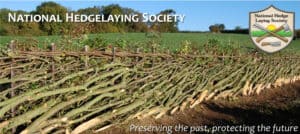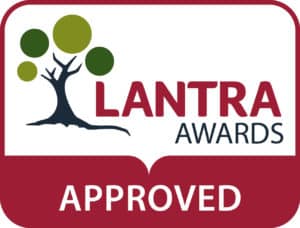September hales the beginning of the Hedgelaying and competition season, the start to the busiest time of the year for professional hedgelayers, all cutting in various styles around the country, it is a great opportunity to come together to meet and compete against their peers.
Paul has had a good start to the season, he was a winner of the best regrowth at two separate competitions earlier this month and came first in the Hurstpoint and District Agricultural Associates Hedgelaying competition held yesterday, Sunday 25th September.
The hedge was tall and in some places reached 18 to 20 feet, it was more Hazel stools than an existing hedgerow. The weather was perfect for us as we were shaded all day, the temperature approximately 20c. The finished hedge was a great improvement on what we had to work with, of course I was very pleased to win. Paul Matthews

On Saturday 29th October the National Hedgelaying Championship will be held from 9 a.m. to 5 p.m. (competition 9 a.m. to 2 p.m.)
by the kind permission of Crowmarsh Battle Farms.
Clacks Farm, Clacks Lane,
Wallingford Oxfordshire, OX10 8PN
Please note that the competition is “closed” meaning that it is only open to members of the NHLS.
The hedgelaying competition showcases the different regional styles of cutting and laying from around the country and is divided into separate classes for each regional style with different categories for both experienced and less experienced cutters.
This week Paul will be coppicing and preparing his stakes and binders for his first commercial hedge of the season, he will also be welcoming our first group of hedgelaying trainees to Norbury Park, Fetcham, Surrey this weekend where they will have the opportunity to learn the skill of cleaving (splitting) the Sweet Chestnut into 2, 4 or even 8 stakes for the hedge using a ‘cleaving break’ and axe skills to point up the stakes to be used in the hedge. The hedgelaying takes part on the second day, this is a chance for trainees to learn the skill of pleaching the stems before laying using hand tools, staking up the hedge and adding the binders to finish.
See here for more information: Hedgelaying Training Courses

We are pleased to be able to offer training courses for those who wish to progress their skills and work towards achieving a bronze, silver or gold accreditation in hedgelaying.
The National Hedgelaying Society offers training and assessment in hedgerow management. A series of progressive practical Lantra approved assessments provide a three‐tier system of accreditation awards in hedgelaying. The scheme is designed to ensure that hedgelayers achieve the highest standards of craftsmanship.
The new Accreditation Scheme offers both established hedgelayers and those new to the craft, the opportunity to have their skills assessed against standard criteria to attain one of the three levels of accreditation. Each level of accreditation from Bronze (competent level) to Gold (advanced level) is assessed against standards relevant to that level of skill.
Please make contact if you would like to learn more about the accreditation, courses and potential funding available.
Hedgelaying is a management solution for overgrown hedges widely practised throughout the UK and Europe during the winter months. A traditional country craft that rejuvenates existing hedgerows by encouraging them to put on new growth, Hedgelaying improves the overall structure and strength of a hedge providing protection for crops and wildlife.
Healthy hedges can offer a solution to help fight climate change as they sequester carbon both in woody growth above the ground and in their roots, leaf litter and soil below ground. In addition, hedges across slopes capture eroding soil and can increase soil organic carbon for up to 60m uphill. Hedgerows provide refuge and corridors for wildlife to enable movement throughout the landscape and offer an important source of food for birds and small mammals.


07446837492
lorraine@hedgesandhurdles.com
Burnley, Green Lane. Whitebushes, Redhill, Surrey, RH1 5LJ
Privacy Policy – Terms – Website Terms – Commercial Terms